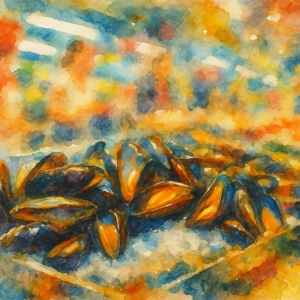Take on some French music to improve your French listening skills. It’s French in real life, but definitely not as fast as some of the other clips on site. How much can you pick up when French is sung? Hear it and pick up some great vocab too. These two expressions stood out to me:…
Take the quiz, join the conversation.
Did you find this one challenging or easy? Did you hear something diffferent? What surprised you? What levels did you complete? Comment below and share what’s opening up for you with this quiz.
Learn French with a pop song snippet! This clip is from the song “Les amants parallèles” by Vincent Delerm; songwriters: Clement Ducol / Vincent Delerm; Les amants parallèles lyrics © Lili Louise Musique Sarl. Listen and fill in what you hear below. Read more and find a translation below. Find the full song here.
The above audio sample and transcription is from the song “Les amants parallèles” by Vincent Delerm; songwriters: Clement Ducol / Vincent Delerm; Les amants parallèles lyrics © Lili Louise Musique Sarl. We do not own the content. Find the full song here.
still
How are you getting on?
The snippet in English
Find a translation of this snippet here, how much of this did you hear?
Parallèle à côté
Sur le lit nos corps parallèles
Pas les mêmes, pas mélangés
Pas loin et à côté quand même
Parallel next door
On the bed our parallel bodies
Not the same, not mixed
Not far and yet next to each other
English translation by Deepl. Check it.
What does “à côté” mean?
“À côté” is a French phrase meaning “next to” or “beside” in English. It’s used to describe the location of something in relation to another object, indicating close proximity.
Usage and Context:
- Describing Physical Proximity:
- Used to indicate that one object or person is immediately adjacent to another.
- Example: “La boulangerie est à côté du supermarché.” (The bakery is next to the supermarket.)
- In Directional Statements:
- Commonly used in giving directions or describing locations.
- “Assieds-toi à côté de moi.” (Sit next to me.)
Cultural Notes:
- “À côté” is a frequently used prepositional phrase in everyday French conversation, especially in contexts of spatial orientation and directions.
- In a broader sense, it can also metaphorically mean “off-topic” or “beside the point” when used in discussions.
In Summary:
“À côté” (next to/beside) is a common French phrase used to describe physical proximity or location in relation to another object or person. It’s frequently used in everyday language, particularly in giving directions and discussing spatial relationships.
What does “quand même” mean?
“Quand même” is a versatile French expression that can translate to “anyway,” “still,” “even so,” or “nonetheless” in English. It’s used to express a sense of defiance, persistence, or contrast.
Usage and Context:
- Overcoming Obstacles or Contradictions:
- Indicates doing something despite difficulties or contradictions.
- Example: “Il est tard, mais je vais sortir quand même.” (It’s late, but I’m going out anyway.)
- Emphasizing a Point:
- Used for emphasis or to assert a point.
- “C’est cher, mais je l’aime quand même.” (It’s expensive, but I like it anyway.)
Cultural Notes:
- “Quand même” is a common phrase in French, widely used in both casual and formal speech. It reflects the language’s ability to convey nuances of persistence, concession, and contrast.
- The phrase can also convey a sense of surprise or admiration, depending on the context and intonation.
In Summary:
“Quand même” (anyway/still) is a multi-purpose French expression used to indicate doing something despite difficulties, to emphasize a point, or to express contrast. Its versatility makes it a popular choice in various conversational contexts, reflecting the subtleties of the French language in conveying defiance, persistence, or surprise.
Discover the Rhythms of French with Music: Enhance Your Learning Experience
Music, with its catchy melodies and repetitive structures, is a powerful tool for language learners. It not only entertains but also reinforces linguistic patterns, making it easier to grasp and remember new vocabulary and phrases.
Why Learn French with Music?
- Cultural Immersion: French music offers a window into the rich tapestry of French culture, traditions, and history. By exploring different genres – from classic chansons to contemporary pop – you gain deeper insights into the French way of life.
- Memorable Vocabulary: Lyrics in songs are often catchy and repetitive, aiding in memorization. Music acts as a mnemonic device, making retention of new words and phrases more effective.
- Pronunciation Practice: Singing along with French songs is a fun way to improve your accent and intonation. It helps in mimicking native speech patterns and rhythms.
- Emotional Connection: Music evokes emotions, making the learning experience more engaging and memorable. You’re more likely to recall phrases associated with emotions stirred by a song.
- Diverse Learning: Through songs, you’re exposed to a variety of dialects, slangs, and expressions used in everyday French, broadening your understanding of the language.
Why Practice Transcriptions with Music to Improve Listening in French?
- Enhanced Listening Skills: Transcribing lyrics sharpens your listening abilities. It challenges you to distinguish words and phrases within the flow of music, improving your auditory comprehension.
- Contextual Learning: Understanding the lyrics within the context of a song helps in grasping the nuances of French language usage, such as idiomatic expressions and colloquialisms.
- Active Engagement: The process of transcription is an active learning exercise. It encourages you to focus intently on the language, enhancing concentration and retention.
- Grammar and Structure Exposure: Analyzing song lyrics exposes you to different grammatical structures and sentence constructions, contributing to a deeper understanding of French grammar.
What did you love about this?
Comment below with your feedback! Tells us what you think. Send a note or leave a comment below. We appreciate the feedback. Also, we’re always looking for partners to build this site and grow the content available.








